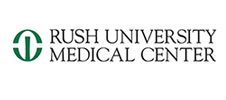Rotator Cuff Repair with Augmentation
Rotator Cuff Repair with Augmentation: Patches, Biologics, and Enhanced Outcomes
Background:
This is a comprehensive guide on advanced rotator cuff repair techniques. As an orthopedic surgeon specializing in shoulder surgeries, I am excited to explore the utilization of patches and biologics in augmenting rotator cuff repairs, with a particular focus on outcomes, recovery benefits, and their application in revision surgery.
Anatomy:
Rotator cuff is the group of tendons in the shoulder joint providing support and enabling wider range of motion. Major injury to these tendons may result in tear of these tendons and the condition is called as rotator cuff tear. It is one of the most common causes of shoulder pain in middle aged adults and older individuals. It may occur with repeated use of arm for overhead activities, while playing sports or during motor accidents. Rotator cuff tear causes severe pain, weakness of the arm, and crackling sensation on moving shoulder in certain positions. There may be stiffness, swelling, loss of movements, and tenderness in the front of the shoulder.
Complex Rotator Cuff Repair with Biceps Tendon Transfer
What is a re-tear of the tendon?
When the rotator cuff is torn and continues to be painful a surgeon will repair the tendon. Unfortunately, not all repairs heal, and some data suggests the number may be as high as 20%. If the repair fails, patients may continue to experience pain after their repair. This can occur shortly after the first surgery or can take years to present. If this occurs a revision rotator cuff repair may be needed. Dr. Garcia has significant experience with revision shoulder procedures and has pioneered some of the new rotator cuff techniques.
When the rotator cuff re-tears it can be a partial or full re-tear. If a partial tear is found non-operative treatment is usually tried but may be unsuccessful. For these failed patients and full thickness re-tears, Dr. Garcia will offer an arthroscopic approach to revise the previous surgery. This arthroscopic approach improves overall outcomes after revision surgery with less pain and faster recovery time.
Challenges in Rotator Cuff Repair
Despite advancements in surgical techniques, certain factors can complicate rotator cuff repair, including tear size, tissue quality, chronicity, and patient-related factors. Large or massive tears, in particular, present unique challenges, often necessitating innovative approaches to achieve optimal outcomes.
Dr. Garcia demonstrates the new cuffmend rotator cuffaugmentation technique.
Role of Patches in Augmenting Rotator Cuff Repairs
Patches, also known as grafts or scaffolds, have emerged as valuable adjuncts in rotator cuff repair. These patches serve several purposes:
- Reinforcement: Patches provide structural support to the repair site, distributing the load and reducing tension on the repaired tendon. This is especially beneficial in cases of large tears or compromised tissue quality.
- Biomechanical Enhancement: Certain patches possess biomechanical properties that closely mimic native tendon tissue, enhancing the strength and durability of the repair.
- Biological Integration: Some patches are designed to promote biological integration, facilitating the ingrowth of native tissue, and promoting long-term healing.
Types of Patches
Several types of patches are available for rotator cuff repair, each with its unique characteristics and indications:
- Synthetic Patches: Made from materials such as polyethylene or polyester, synthetic patches offer immediate mechanical support but may lack biological integration.
- Biological Scaffolds: Derived from human or animal tissues, biological scaffolds offer excellent biocompatibility and promote tissue ingrowth. Examples include xenografts and allografts.
- Acellular Dermal Matrices (ADMs): ADMs, derived from human or porcine dermis, provide a scaffold for tissue regeneration while minimizing the risk of immune reaction. They have been widely used in rotator cuff repair with favorable outcomes.
Biologics in Rotator Cuff Repair
Biologics, such as platelet-rich plasma (PRP) and mesenchymal stem cells (MSCs), have gained popularity for their regenerative properties in tissue healing. When used in conjunction with rotator cuff repair, biologics offer several advantages:
- Enhanced Healing: Biologics contain growth factors and cytokines that promote angiogenesis, cell proliferation, and extracellular matrix synthesis, accelerating the healing process.
- Anti-inflammatory Effects: Certain biologics exert anti-inflammatory effects, reducing pain and swelling in the postoperative period.
- Tissue Regeneration: MSCs have the potential to differentiate into various cell types, including tenocytes, promoting tissue regeneration and remodeling.
Utilization of Patches and Biologics in Revision Surgery
Revision surgery for failed rotator cuff repairs presents unique challenges, including scar tissue formation, poor tissue quality, and altered anatomy. Patches and biologics play a crucial role in optimizing outcomes in revision cases by:
- Addressing Tissue Deficiency: In cases of re-tears or failed repairs, patches provide structural support and augment the existing tissue, improving the likelihood of successful outcomes.
- Promoting Healing: Biologics enhance the biological environment at the repair site, promoting tissue healing and regeneration even in challenging revision scenarios.
- Improving Biomechanics: By reinforcing the repair and enhancing tissue quality, the combination of patches and biologics improves the biomechanical properties of the repaired tendon, reducing the risk of re-tears.
7 weeks after rotator cuff repair with Cuffmend
Outcomes and Recovery Benefits
The utilization of patches and biologics in rotator cuff repair has led to several notable outcomes and recovery benefits:
- Improved Healing Rates: Studies have demonstrated improved healing rates and reduced re-tear rates when patches and biologics are used adjunctively in rotator cuff repair.
- Enhanced Functional Outcomes: Patients undergoing rotator cuff repair with patches and biologics often experience improved shoulder function, range of motion, and strength compared to traditional repairs.
- Faster Recovery: The combination of patches and biologics may facilitate faster recovery times by promoting tissue healing and reducing postoperative inflammation.
- Reduced Revision Rates: By addressing underlying tissue deficiencies and promoting robust healing, the use of patches and biologics may reduce the need for revision surgery following rotator cuff repair.
Conclusion:
The integration of patches and biologics represents a significant advancement in rotator cuff repair, offering enhanced outcomes, accelerated recovery, and improved durability, particularly in revision surgery scenarios. As our understanding of these techniques continues to evolve, patients can expect even greater improvements in shoulder function and quality of life following rotator cuff repair. Dr. Garcia has advanced training in patch and biologic augmentation of rotator cuff tears.


















